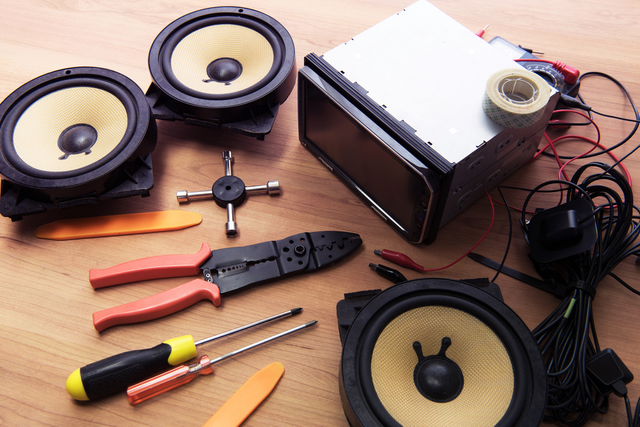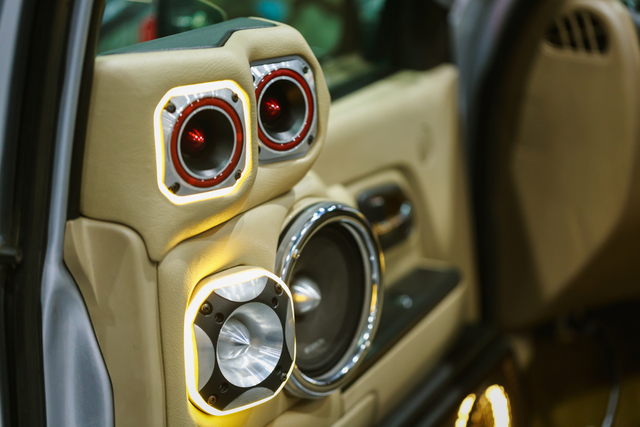【HOT】2 Way, 3 way, 4 way Speakers » What are Difference Between 2 Way 3 Way and 4 Way Speakers

One of the most critical components of a stereo system whether in your car or at home is the speaker set. We all know that music is usually recorded in such a way that the sound gets split up into two channels, the right channel and the left channel. However, manufacturers build speakers and speaker systems differently, and the quality of sound varies according to how we put a speaker system together.
The difference between various speaker systems is the number of speakers that are hooked up together. Depending on this, you may get a 2 way, 3 way or 4 way speaker system. Here, we take a closer look at the difference between 2 way and 3 way speaker, 4 way speakers. However, before we get into the technicalities of different types of speakers, it would be a good idea get acquainted with the basic construction of a speaker and how it works.
Loudspeaker Definition
According to the Merriam-Webster dictionary, a loudspeaker or a speaker as we call them is a "device that changes electrical signals into sounds loud enough to be heard at a distance.”
How a Speaker Works
Thus, by definition, it is clear that a speaker is a device that converts electrical energy into sound energy. Let us consider the basic construction of a loudspeaker. The most commonly-used type of speaker is a moving coil loudspeaker. The speaker cone is composed of paper, plastic or some other material fixed to the speaker rim on its perimeter.
It rests on a flexible electromagnetic coil (the voice coil), placed near a permanent magnet also known as the field magnet. When current flows through the voice coil, it creates an electromagnetic field which attracts or repels the voice coil to and from the permanent magnet. This deflection causes the voice coil to push the cone back and forth to create a vibration in the form of sound energy.
Factors Influencing the Functioning of a Speaker
Here are some of the main factors that affect the way a speaker works:
Size: Smaller speakers will produce high frequencies and vice-versa. Cone size results in different categories of speakers such as tweeters, mid-range speakers, woofers and subwoofers.
Material: The material used for a speaker will vary the way sound gets produced. For this reason, you will see different material for a woofer cone and for a tweeter cone.
Placement: A lot depends on the way you place your speakers. Hence, you will always get balanced sound if you place woofers, midrange speakers and tweeters at different locations.
Space Availability: In your living room or music room you have ample space to range around your speakers to separate the different frequency to get more accurate sound. However, in a constricted place like a car, limitations have created the necessity to build 2 Way and 3 Way Speaker, 4 Way Speakers and other modifications.
Enclosure Dimensions: The enclosure is the space behind a speaker which allows the sound to spread out before reaching your ears. Ideally, an enclosure should be in sync with the frequency of the speaker which will allow just the right degree of reverberation.
Damping: Although the sound of a speaker reverberates, it needs to be controlled, as excess reverberation can result in undesirable vibration. Hence, damping material like foam is used to absorb excess echo.

2 Way Speakers
This category is the most prevalent type of speakers, especially useful in cars where the two significant constraints are space and budget. 2 way speakers of coaxial speakers as they are more popularly known have two components, the bass woofer and the tweeter. The construction of a 2 way speaker is 2 separate concentric cones joined together on a common axis, which explains why they are called “coaxial”.
See Also: Difference Between Coaxial and Component Car Speakers
The bigger cone is the woofer which produces lower frequency sounds typically between 20 Hz to 3 kHz and will make musical instruments like a bass guitar or bass drum audible. The tweeter provides sounds in the higher frequencies that range between 30 Hz to 160 Hz. This component will make the higher frequency sounds like a cymbal or triangle more audible. These are the cheapest type of speakers, as they cover a full frequency in a single unit, eliminating the need to purchase separate speakers for different frequency ranges.
3 Way Speakers
You will see that 2 way speakers have their limitations concerning frequency response. Although they are designed to cover a more extensive frequency range, there is a tendency for these frequencies to overlap, which results in compromising on sound quality. To add more dimension to the frequency response of a speaker, 3 way speakers or tri-axial speakers are used. These speakers have a woofer and tweeter like in a 2 way speaker but they have an additional speaker known as the mid-range. Mid-ranges cover the frequencies between 160 Hz to 502 Khz. Due to the mid-range fitted in a 3 way speaker, specific middle frequency sounds become more precise like the human voice, or specific musical instruments like a trumpet or saxophone.
4 Way Speakers
These type of speakers are also known as quad-axial speakers. We can best explain A 4 way speaker as being a 3 way speaker fitted with an extra tweeter. This second tweeter is often referred to as a “super tweeter” and reproduces sounds corresponding to the upper limit of the frequency spectrum. 4 way speakers are not very popular in the audio world, as we tend to think of them as a means to pack too much into too little regarding frequency range and sound response.
Which Type of Speaker to Choose?
You will be now clear on your basic query regarding the difference between 2 way and 3 way speaker and 4 way speakers. We also discussed how each type of speaker has its advantages (or disadvantages) over the others. You may wonder which type of speaker is most suitable for your purposes. However here, there is no definite answer. It all depends on your requirement.
For more information: Best Car Speakers on The Market
If you have a space restriction, then a 2 way and 3 way speaker would probably serve your purpose. If you have more space at hand, you could add a set of 4 way speakers. We hope you have enjoyed reading this article. Please do respond with your valuable comments and feedback and we will be happy to get back to you.